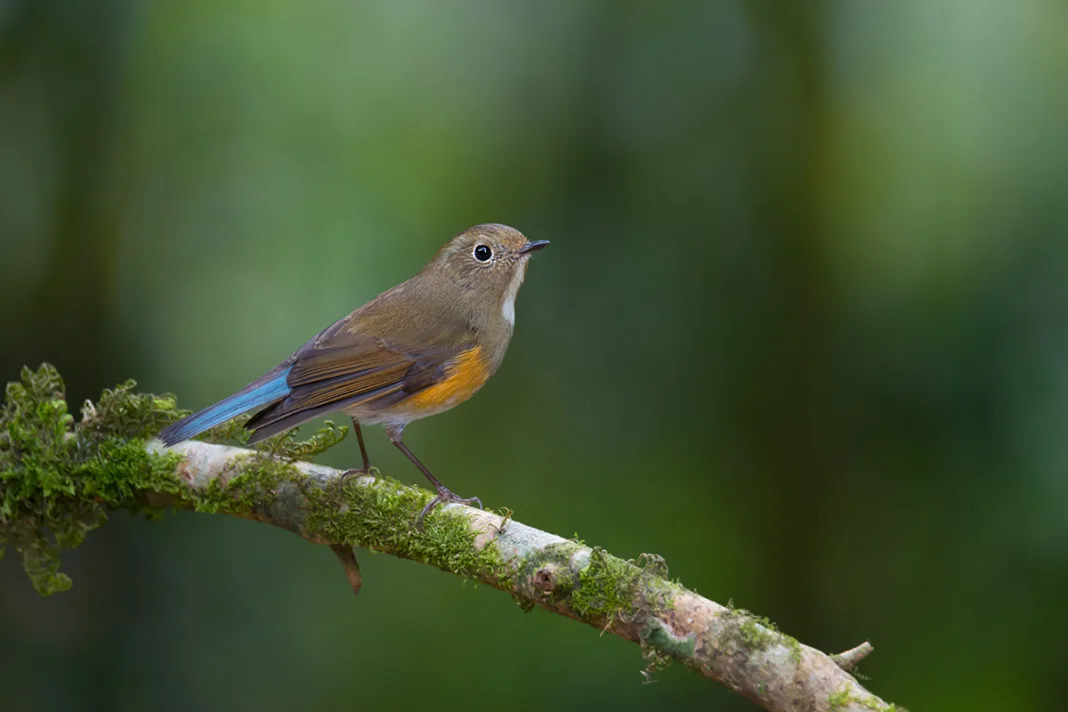Geoff Gradwell has spoken about the numerous African and South American birds that he has kept during his years in aviculture, but what experience does he have with the species found on Earth’s largest continent, Asia? Here he discusses his adventures with families including niltavas, pittas and broadbills
Although my main interest has always been in birds from Africa and South America, I have, on occasions, kept birds from various Asian countries, usually with mixed results. The reason for these outcomes was that, in my experience, birds exported from Asia normally arrived in the UK in deplorable condition.
I have been present at various dealers’ premises when the birds arrived and because they were boxed with the stickiest concoction available (usually something that vaguely resembled rotten fruit), they were sometimes glued together because the food, perhaps, had spilt in transit. In pre-quarantine days, I could usually obtain birds from Africa or South America within a couple of days of their arrival in the UK – and sometimes on the actual day – and be reasonably confident that I could acclimatise them without difficulty.
But birds from Asia were a different story. I soon concluded that it was preferable to leave them in the care of the dealer concerned for a few weeks and whatever was left alive after the invariable losses normally had a reasonable chance of survival.
In the early days, I obtained the usual bulbuls, white-eyes and Pekin robins (Leiothtrix lutea) for not much more than the price of a pair of common seedeaters. I had reasonable success with the bulbuls and white-eyes, but very quickly realised that the Pekin robins were nest- raiders, so they were disposed of never to reappear again in my aviaries.
At the beginning of the 1970s, I decided to try my hand with some of the harder-to-establish Asian softbills and purchased a rufous-bellied niltava (Niltava sundara) and a pair of red-flanked bluetails (Tarsiger cyanurus). I found the most difficult part of establishing them was getting the birds off the 100 per cent livefood diet that they were used to and on to a more balanced food intake. As I have stated in previous articles, this was more easily achieved with immature birds, which are usually more amenable to change. I decided to read as much literature about the fanciers who specialised in keeping the more difficult British softbills, because they had, on the whole, solved the problems of softbill diets.
After a lot of trial and error, I eventually devised a diet that suited both myself and the birds. I used the crumble mix diet, which I offered my tanagers and honeycreepers, plus a universal insectile mix that was moistened with honey or natural yoghurt (a massive benefit for the birds), to which grated cooked prawns were added. I am fortunate that I live close to a fishing port and any prawns with cracked shells, etc, were classed as not suitable to be sold and had to be given away.
I also gave six mealworms per bird per day. I soon discovered that the birds were doing really well on this diet and stuck rigidly to it. As a matter of interest, I think that the seafood sticks sold today in supermarkets would have a hugely positive effect on birds’ diets, if grated. Unfortunately, they were not available in the 1970s.
After the success I had with the niltava and bluetails, I obtained a pair of Javan banded pittas (Pitta guajanus) and a pair of white-capped redstarts (Phoenicurus leucocephalus). Within a couple of months, the redstarts were sitting on a clutch of eggs, which unfortunately proved to be dead-in-shell. However, the pittas proved to be a completely different problem.
If these birds walked on a hard surface for only a couple of days they developed serious foot problems, which could cause permanent damage. They had to have an aviary with 7.5cm-10cm (3-4in) of leaf mould and potting compost, which was changed on a weekly basis. This was a lot of extra work, but they were so beautiful and interesting that it was worth it.
I have kept a number of the broadbill family, namely the green (Calyptomena viridis), long-tailed (Psarisomus dalhousiae) and silver-breasted (Serilophus lunatus). The green was one of my favourite birds and mainly a frugivore, but the silver-breasted and long-tailed were probably the most difficult birds to get off a livefood diet that I have ever owned. For this reason, I disposed of them and achieved an ambition by purchasing a young pair of large niltavas (N. grandis). The Latin name describes them better than I ever could. Simply stunning.
Apart from the niltavas, one of my favourite Asian softbills is the maroon-backed accentor (Prunella immaculata), which although very sombre in comparison to a lot of the birds I have kept, seems to have what colour it possesses exactly where it needs to be.
In my experience, the very brightly coloured birds seem to get attention by their coloration, whereas the less brightly coloured birds receive attention by the amount of confidence and character they exhibit. I owned a pair of these accentors in the mid-1970s and actually had a nest of chicks, but unfortunately, they were not reared.
Geoff Gradwell is the secretary of the Scottish Bengalese Fanciers Association.
Find more news and articles like this on the Cage & Aviary Birds website. Subscribe to Cage & Aviary Birds magazine now.


